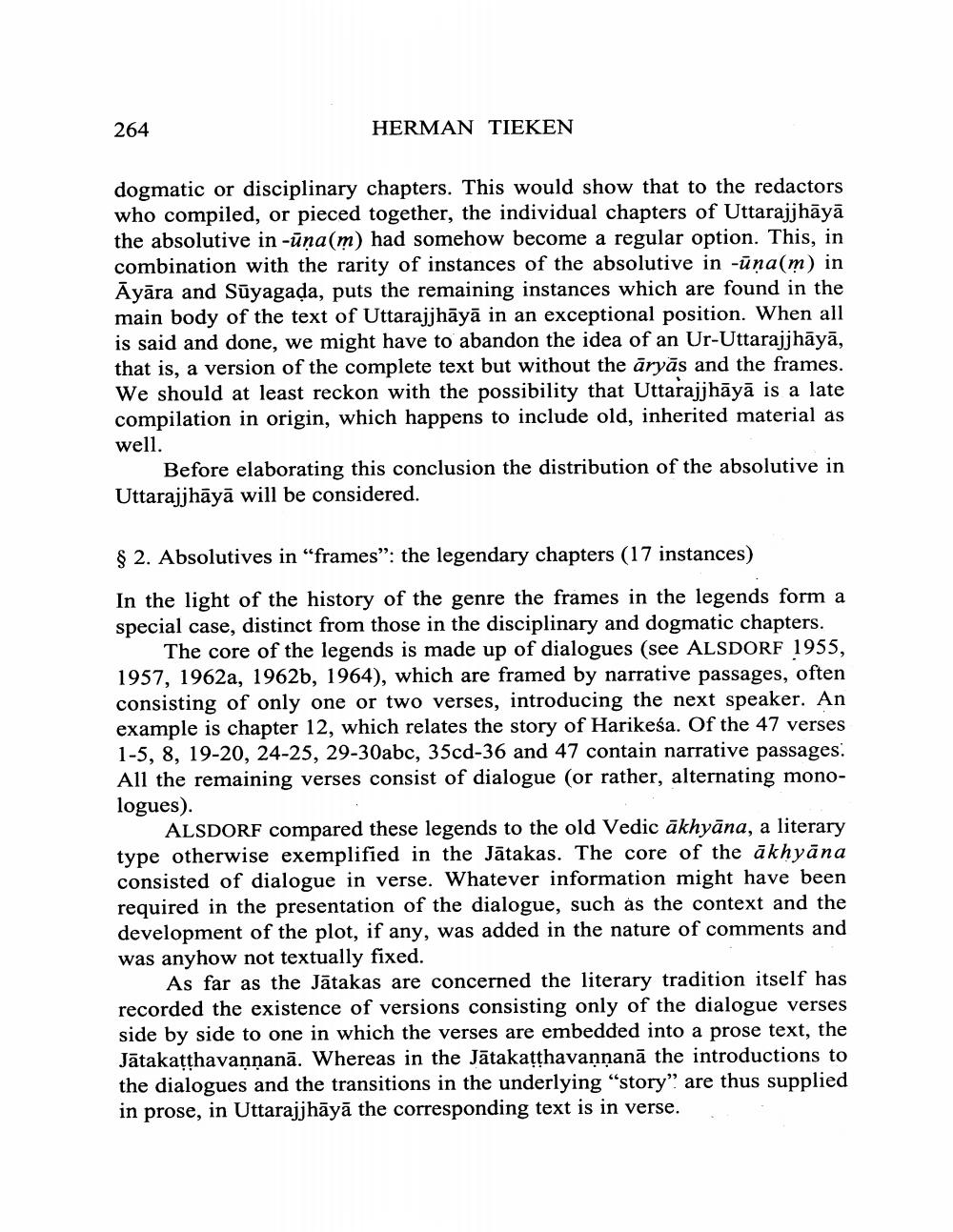Book Title: Distribution Of Absolutive In Una In Ittarajjhaya Author(s): Herman Tieken Publisher: Herman Tieken View full book textPage 4
________________ 264 HERMAN TIEKEN dogmatic or disciplinary chapters. This would show that to the redactors who compiled, or pieced together, the individual chapters of Uttarajjhāyā the absolutive in -una (m) had somehow become a regular option. This, in combination with the rarity of instances of the absolutive in -ūna(m) in Ayāra and Suyagaḍa, puts the remaining instances which are found in the main body of the text of Uttarajjhāyā in an exceptional position. When all is said and done, we might have to abandon the idea of an Ur-Uttarajjhāyā, that is, a version of the complete text but without the aryas and the frames. We should at least reckon with the possibility that Uttarajjhāyā is a late compilation in origin, which happens to include old, inherited material as well. Before elaborating this conclusion the distribution of the absolutive in Uttarajjhāyā will be considered. § 2. Absolutives in "frames": the legendary chapters (17 instances) In the light of the history of the genre the frames in the legends form a special case, distinct from those in the disciplinary and dogmatic chapters. The core of the legends is made up of dialogues (see ALSDORF 1955, 1957, 1962a, 1962b, 1964), which are framed by narrative passages, often consisting of only one or two verses, introducing the next speaker. An example is chapter 12, which relates the story of Harikeśa. Of the 47 verses 1-5, 8, 19-20, 24-25, 29-30abc, 35cd-36 and 47 contain narrative passages. All the remaining verses consist of dialogue (or rather, alternating monologues). ALSDORF compared these legends to the old Vedic ākhyāna, a literary type otherwise exemplified in the Jātakas. The core of the akhyāna consisted of dialogue in verse. Whatever information might have been required in the presentation of the dialogue, such as the context and the development of the plot, if any, was added in the nature of comments and was anyhow not textually fixed. As far as the Jātakas are concerned the literary tradition itself has recorded the existence of versions consisting only of the dialogue verses side by side to one in which the verses are embedded into a prose text, the Jātakaṭṭhavanṇanā. Whereas in the Jātakaṭṭhavanṇanā the introductions to the dialogues and the transitions in the underlying "story" are thus supplied in prose, in Uttarajjhāyā the corresponding text is in verse.Page Navigation
1 2 3 4 5 6 7 8 9 10 11 12 13 14 15 16 17 18 19 20 21 22 23 24 25 26
